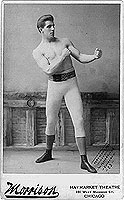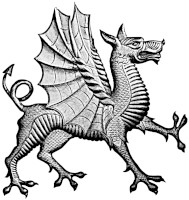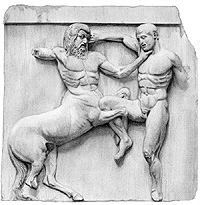The Hellenik Lunar Month: before 1300 B.C. to circa A.D. 408
This reconstruction is based largely on Hesoid’s Works and Days, circa 800 B.C.
which reflected an old oral tradition with deep roots, possibly as ancient as Minoan Krete. Months alternated between 29-day (hollow) and 30-day (full) months.
The month depicted would be the Athenian version, as would the patron deities. The Spartans wouldn’t worship Athena, Poseidon, or Theseus; instead Ares and the Dioskuri would be worshipped. The new day began at sundown.
Moon Day, Decad Day, Moon Sign, Deity, Recommended Activity
—First Decad or Waxing Moon—
1, 1, first visible, Apollo, Worship
2, 2, -, Zeus, Variable, (Ask the priest!)
3, 3, -, Athena, birth of
4, 4, -, Hermes, Herakles, Apollo, Poseidon Worship, new projects, Arakhne, Eros, Aphrodite, Courtship
5, 5, -, Zeus, Oaths
6, 6, -, Artemis, Speeches
7, 7, first quarter, Apollo, birth of Worship
8, 8, -, Poseidon, Theseus, Asklepios, Worship
9, 9, -, -, Worship
10, 10, -, -, -,
—Second Decad or Middle Moon—
11, 1, -, Arakhne (spider goddess of fate), Works
12, 2, -, -, Works
13, 3, -, Athena, -
14, 4, -, -, Taming beasts
15, 5, full moon, Zeus, Kallisto (moon goddess), Oaths
16, 6, -, Artemis, Hunting
17, 7, -, -, Wood-cutting
18, 8, -, Zeus, Variable
19, 9, -, -, -
20, 10, -, Apollo, Discourse, philosophy
—Third Decad or Waning Moon—
21, -10,* -, Aura (goddess of morning wind), -
22, -9, 3rd quarter, Zeus, Variable
23, -8, -, Athena, Worship
24, -7, -, Arachne, Works
25, -6, -, Zeus, Oaths
26, -5, -, Zeus, Variable
27, -4, faint crescent, -, Launch ships
28, -3, -, Zeus, Variable
29, -2, -, Omitted for hallow month -
30, -1, in conjunction, Hekate (goddess of death), ancestors, inquiry, planning
*count-down to the New Moon, expressed as a negative number
The Original Olympian Year: 1000 B.C. to 780 B.C.
The Olympic year began in the month Parthenios (September). The original Olympic festival was held every 8 years. This had something to do with the need to add an extra 90 days to the calendar every 8 years in order to keep the lunar calendar in sync with the solar calendar which governed agriculture. It is possible that the 1 to 2 month Olympic truce constituted a means of making up this time and at the same time giving the people something to do with the time. The calendar was kept in order by the priests, who also presided over the athletic festivals.
The Olympian Year: 776 B.C. to A.D. 393
A better method for intercalating extra months was to add 1 month every other year. The Isthmian games and Nemean agons spaced every two years reflect possible uses of this method. The greater Olympian games held every 4 years, however, appealed more to the priests of Olympia and later Delphi, and also matched the roughly 4-year training cycle required by an athlete to progress from adolescent (16-year-old) competition to the adult ranks; still leaving him 2 more Olympiads of prime competition. Where an 8-year cycle was likely to afford an athlete but one season of prime participation a 4-year cycle would probably afford him 3 attempts –all the more revenue and glory for all involved.
The additional month (if) added to the Olympiad before the first month of Parthenios would constitute the month of training at Olympia required of athletes. Or, if it was added as a “Second Parthenios” would provide the audience time to travel from far and wide, attend the games, and depart for home safely. In practice (regardless of which method of intercalating the additional month was used) this resulted in a 2-month Olympic truce.
The result was the Olympiad, a period of 4 years beginning with the year of the festival. In modern notation Ol.7.1 means Olympiad 7, year 1, or the 1st year of the 7th Olympiad.
The Arkhonian Year of Athens: 683 B.C. to 46 B.C.?
The Athenian year was named after the senior of the city’s council of nine arkhons.
(Each city-state had some similar calendar.) The year began soon after the summer solstice (late June/early July) a month before the Olympic year. Every second year the Athenians intercalated a month after Poseidon (December), which would be known as Second Poseidon and fall in the dead of winter.
1. Hekatombion
2. Metageitnion
3. Boedromion
4. Pyanepsion
5. Maimakterion
6. Poseidon
7. Gamelion
8. Anthesterion
9. Elaphebolion
10. Munykhion
11. Thargelion
12. Skirophorion











